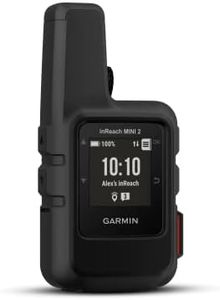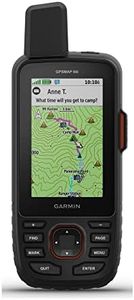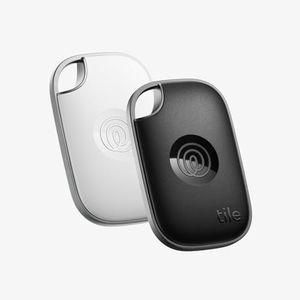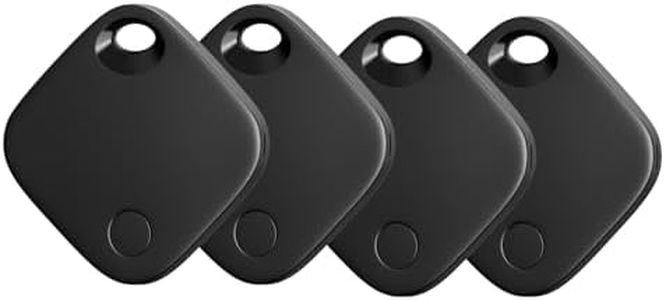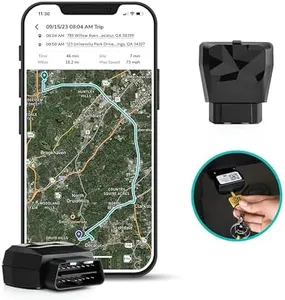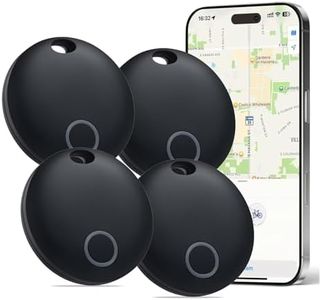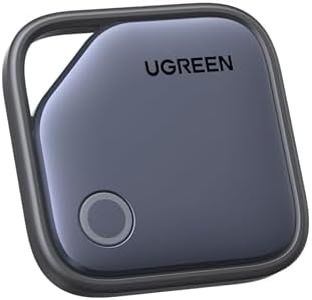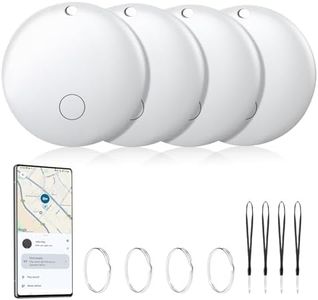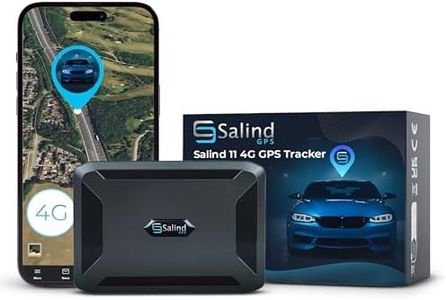We Use CookiesWe use cookies to enhance the security, performance,
functionality and for analytical and promotional activities. By continuing to browse this site you
are agreeing to our privacy policy
10 Best Tracking Devices
From leading brands and best sellers available on the web.Buying Guide for the Best Tracking Devices
Choosing the right tracking device can make a big difference in keeping track of what matters most to you, whether it's keys, pets, luggage, vehicles, or even kids. The first step is to be clear on what you’re tracking and where you’ll need the device to work – indoors, outdoors, locally, or across long distances. Think about what will make the experience easy for you: how often you are likely to lose something, if you need to track on your phone, and whether you want extra features like alerts. Always check compatibility with your other devices and consider size and battery life for comfort and convenience.Tracking TechnologyTracking devices mainly use Bluetooth, GPS, or cellular networks to help you locate your items. Bluetooth trackers work well for short-range, usually up to about 50-200 feet, and are great for everyday items like wallets or keys. GPS and cellular trackers can give real-time location updates over much longer distances and are ideal for tracking vehicles, pets, or things that move in wider areas. Decide what you’re tracking and where it might go to determine which technology suits you best.
Battery LifeThis spec shows how long the tracking device can function before needing a recharge or battery replacement. Some devices have batteries that last months or even a year, while others might require regular charging. If you want to attach a device to something that’s not checked often, like a pet’s collar or a car, longer battery life is better. For things you see daily, like house keys, shorter battery life might be manageable since you can charge or replace the battery more frequently.
Size and WeightThe size and weight of a tracker matter for comfort and suitability. Small, light trackers are perfect for keys, wallets, or backpacks, while larger ones may be suitable for vehicles or luggage. Consider what you’re attaching the tracker to; for pets or kids, lighter is better to avoid discomfort. For cars or equipment, a bigger device could be fine if it means extra features or longer battery life.
Water and Dust ResistanceThis shows how well the device can handle exposure to water and dust. Devices with higher resistance are suitable for outdoor and unpredictable environments, making them good for pets, vehicles, or equipment left outside. If you’re mainly tracking items kept indoors, resistance becomes less critical. Look for water/dust resistance ratings if you expect the tracker to face any exposure.
Alert and Notification FeaturesMany trackers can send alerts to your phone if an item is moved or leaves a certain area, or if you’ve left it behind. Some have remote alarms to help you find things nearby by sound. Decide if you need active alerts, sound notifications, or just location updates. Frequent travelers, parents, or pet owners might prefer more alert features for extra peace of mind.
App Compatibility and Ease of UseMost tracking devices work through a companion app. Compatibility with your phone or device is essential, so check if it works with Android, iOS, or both. Make sure the app is easy to use for checking locations, setting up alerts, or sharing tracking info with others. If you’re new to technology, a simpler app design with clear instructions can be much more user-friendly.

